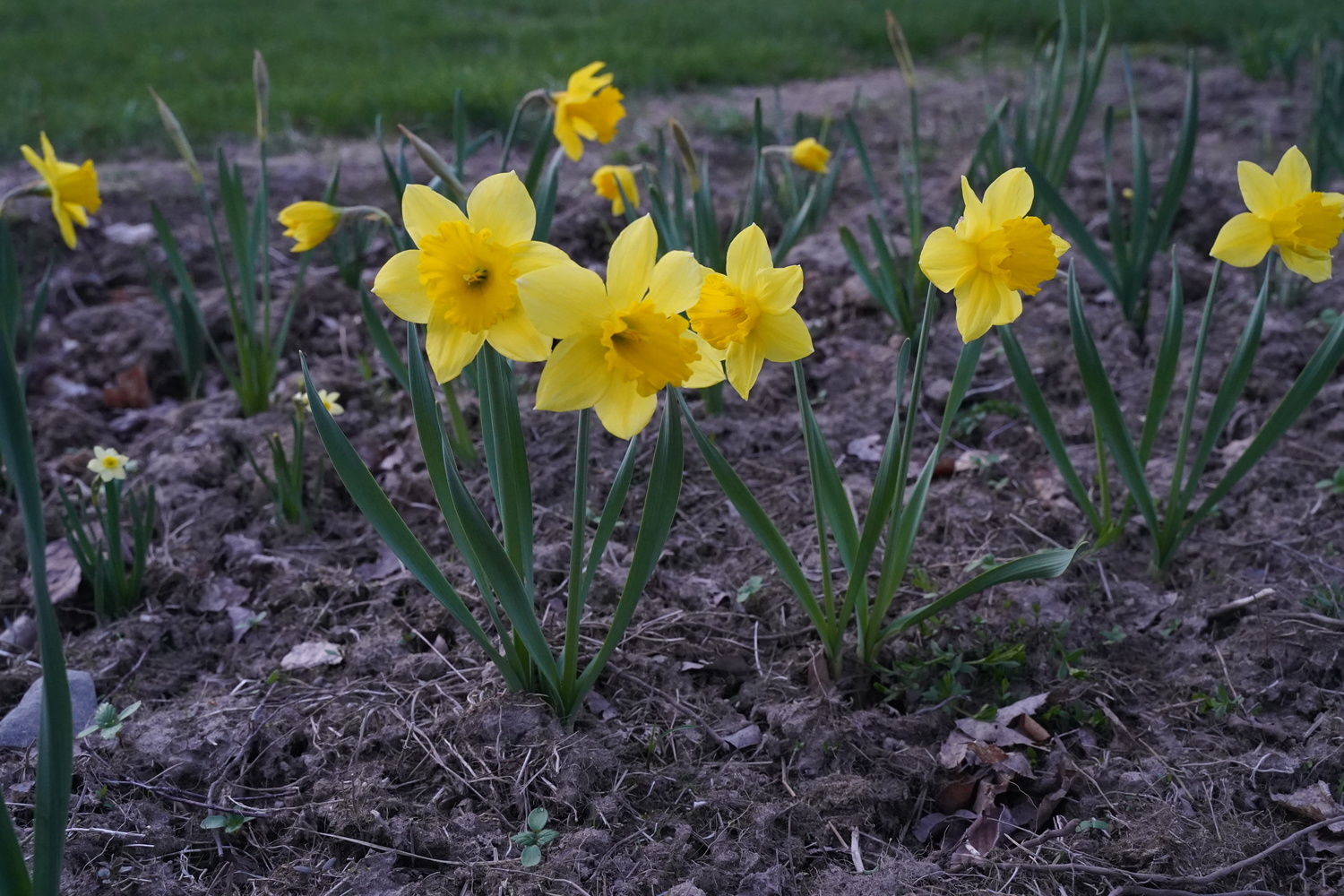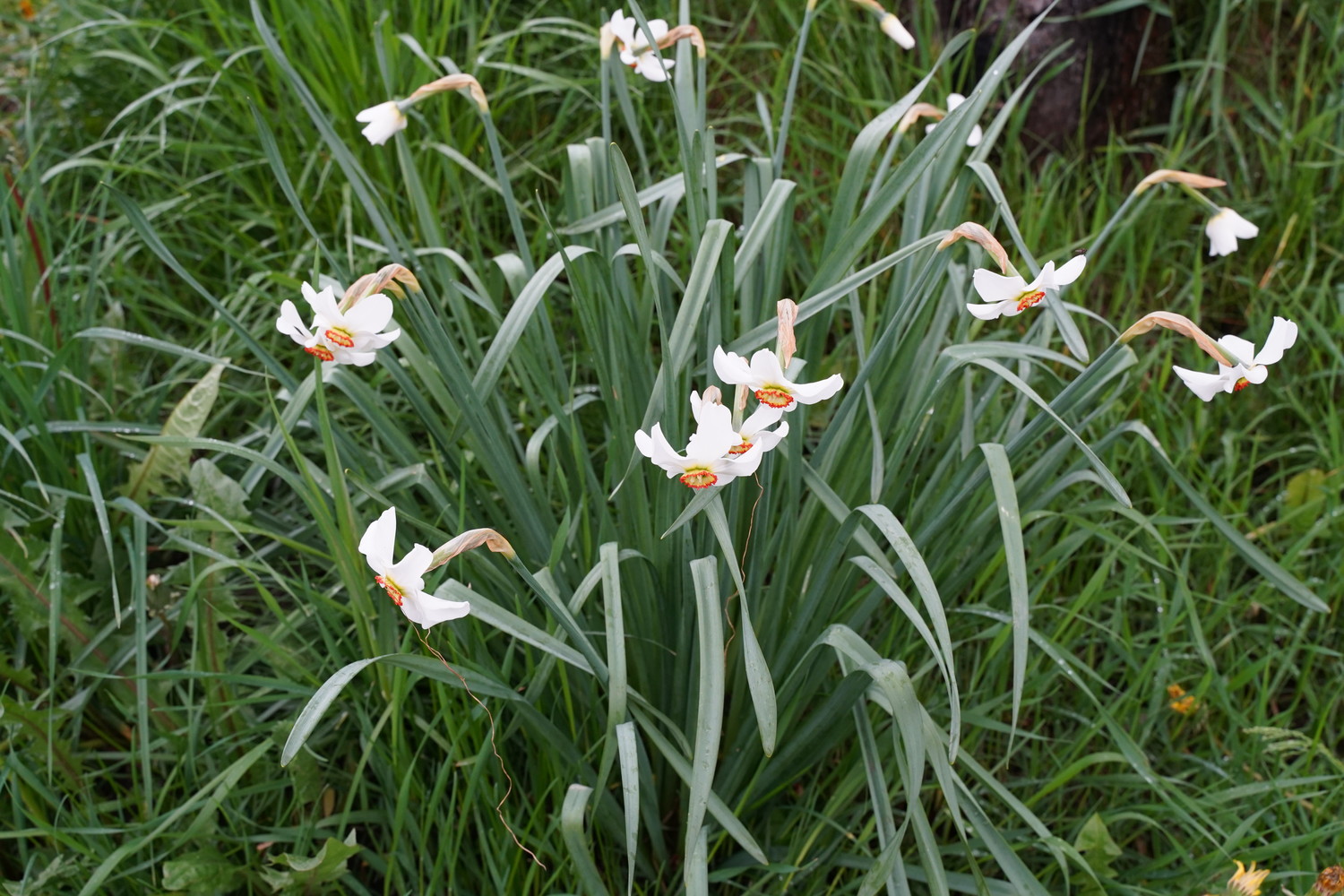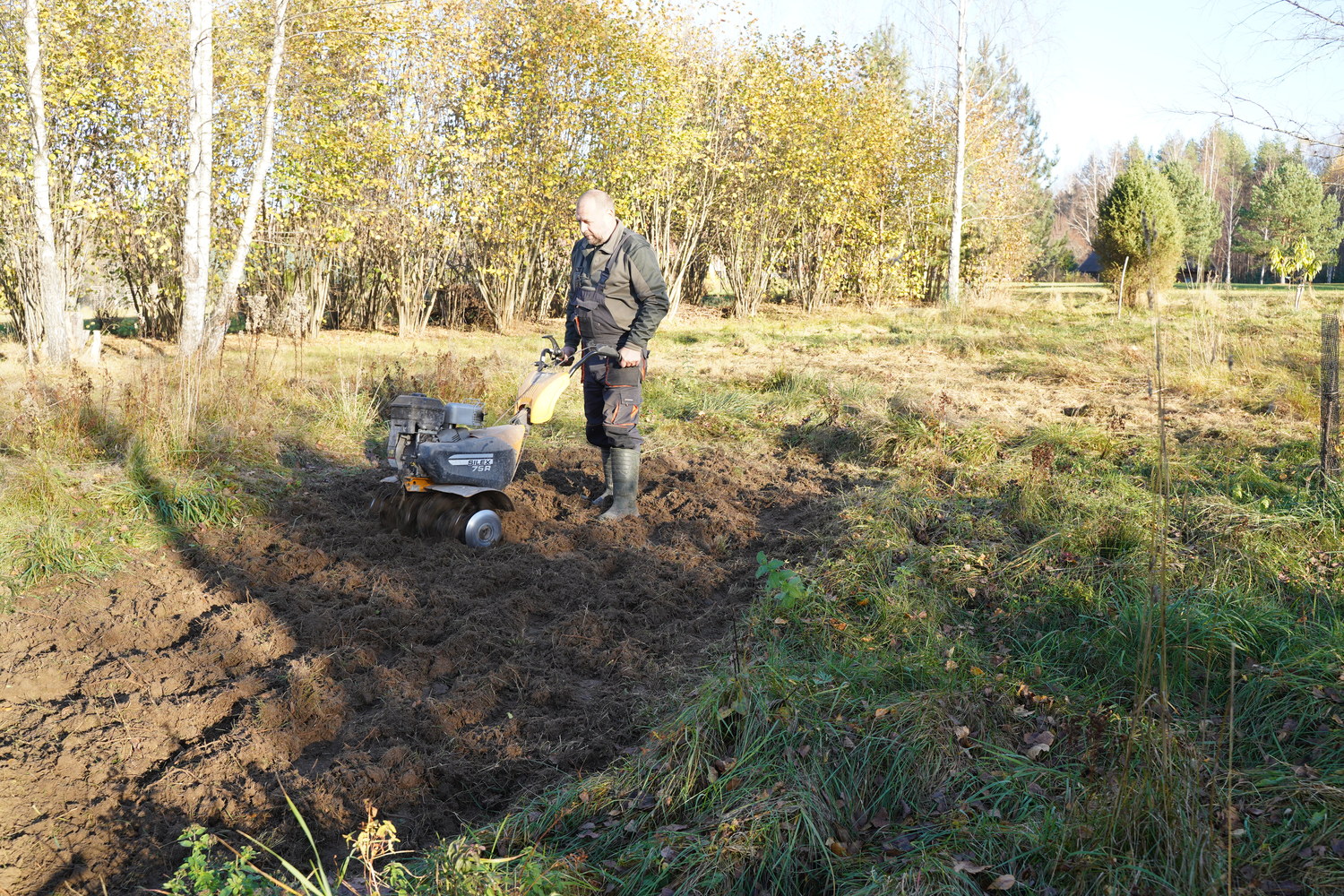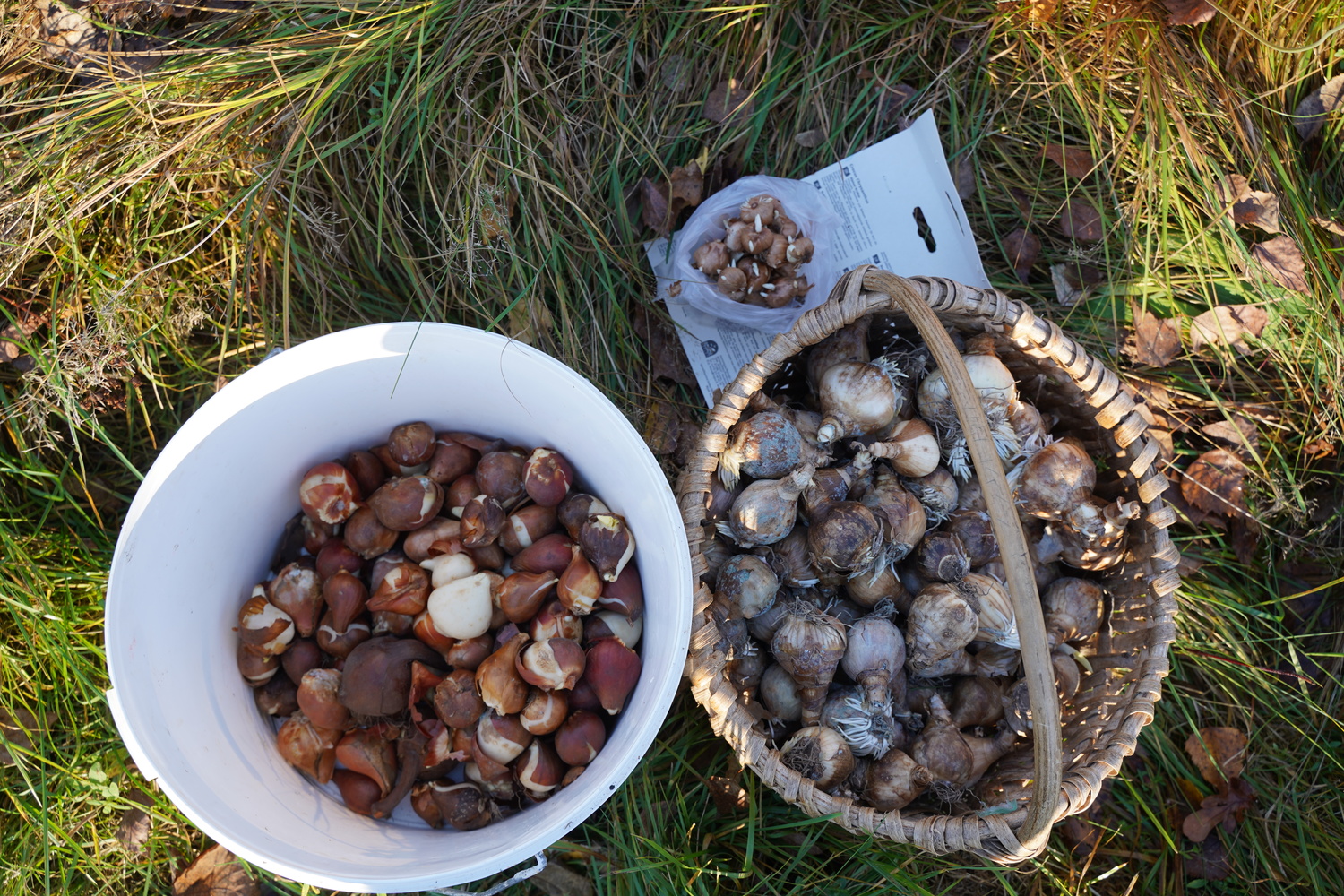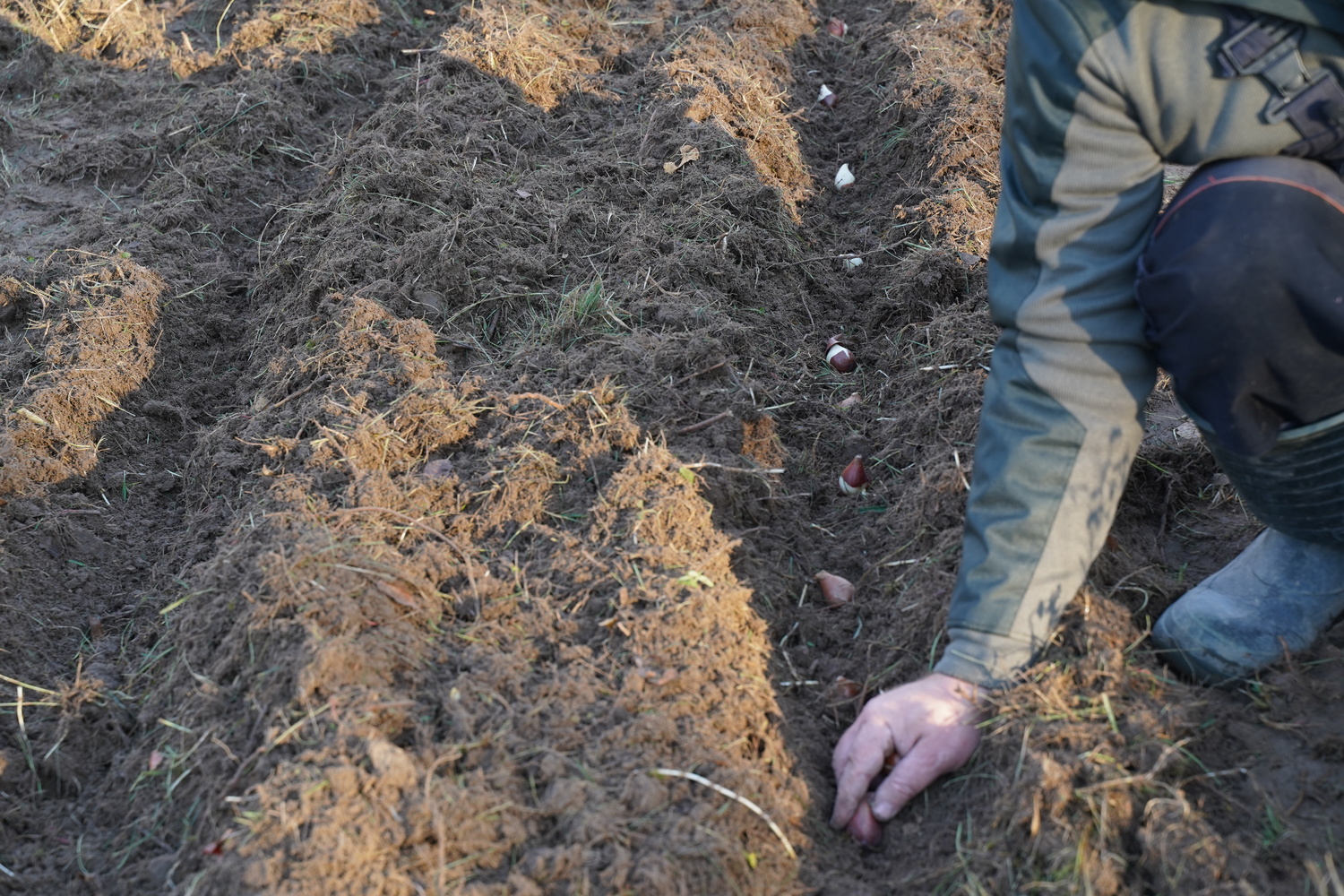These spring-blooming plants became popular in homesteads and parks due to their resistance to climate conditions and easy care. The culture of daffodils truly flourished in the 20th century, when people started paying more attention to ornamental plants in their gardens. Although these plants originate from the Mediterranean region, they grow successfully in colder climates thanks to their winter hardiness. Blooming early in spring, daffodils have become true harbingers of the season.
Creating a Daffodil Meadow
From just a few small clusters in the garden, daffodil meadows are becoming increasingly popular. Large groups of daffodils look truly impressive both from afar and up close. They simply invite you to have a picnic there.

The establishment of flower meadows has gone through many evolutionary stages until the spring meadow was limited to daffodils and crocuses. When planted in large areas, daffodils look more impressive. Tulips declined the following year, most likely because their bulbs were eaten by voles. Additionally, deer like to supplement their diet with tulip flowers and leaves. In contrast, daffodils contain toxic substances that deter voles, deer, and other wild animals from eating them. The main toxic substance found in daffodils is lycorine, an alkaloid that is poisonous to both animals and humans.
Lycorine is found in daffodil bulbs, stems, and leaves. This substance can cause nausea, vomiting, diarrhoea, and other poisoning symptoms if ingested in larger quantities. Due to the presence of this alkaloid, voles, moles, and other small rodents generally avoid daffodil bulbs, while deer and other wild animals avoid chewing the stems or leaves of these plants.
Daffodil Varieties
When it comes to varieties, more than 32,000 daffodil varieties have been registered worldwide. Daffodils are divided into 13 groups based on their flower structure, colour, blooming time, and other characteristics. Daffodils bloom in spring, but their blooming time can vary depending on the variety. It has been observed that yellow daffodils often bloom earlier than white ones. Therefore, yellow and white daffodils could be mixed in a flower meadow. The yellow daffodils start blooming first, and after a week or two, the meadow turns white with the blooming of the white daffodils.
Daffodils vary not only in colour but also in flower shape and structure. For example, trumpet daffodils have a large and prominent trumpet, while poeticus daffodils stand out for their elegant white petals and a small yellow centre with a red edge. Daffodils are classified as follows:
According to the blooming time:
- Early daffodils. These daffodils start blooming in early spring, often in March or April. Yellow daffodils, as you may have noticed, typically belong to this group.
- Mid-season daffodils. Their blooming starts at the end of April or the beginning of May.
- Late daffodils. These varieties bloom in late spring, in May.
According to their colour:
- Yellow daffodils. These are typically the earliest blooming varieties. Due to their brightness and energy, they are very popular in spring gardens.
- White daffodils. These usually bloom later than yellow ones. They have an elegant appearance and are perfect for gardens that require softer colours.
- Bicoloured daffodils. They can feature a combination of yellow and white, orange, or even red colours.
According to flower structure and shape:
- Trumpet Narcissus have one large flower with a long, prominent trumpet-shaped corona.

- Large-cupped Narcissus. Their corona (trumpet) is smaller than the trumpet narcissus, but still quite large.
- Small-cupped Narcissus. The corona is small, shorter than half the length of the petals.
- Double Narcissus fowers have many petals, often appearing "fluffy" or with full centres.
- Poeticus Narcissus typically have white petals and a small, bright yellow or orange centre.
According to their size:
- Large daffodils. The stems can reach up to 50 cm in height, and the flowers are large and bright.
- Small daffodils – dwarf or miniature daffodils, which are perfect for rock gardens or containers.
Daffodil Cultivation
Daffodils are low-maintenance plants, but to ensure their healthy growth and abundant blooming, it is crucial to choose the right soil, properly prepare the bed, know the best time to plant the bulbs, and follow the correct planting distances and depth. The right combination of these factors will guarantee that daffodils will delight with their bright and elegant flowers every spring.
Daffodils are low-maintenance, disease- and pest-resistant. They tolerate weed growth well. An ideal flower for those who don't want to spend much time on care.
The Best Soil for Daffodils
Daffodils grow best in fertile, loose, and well-drained soil. The optimal ph level should be slightly acidic or neutral, ideally between 6.0 and 7.0. The most important factor is good drainage, as daffodils do not like standing water. Excess moisture can lead to bulb rot, so heavy, clayey soil is unsuitable for them. If you have clay soil, it is necessary to improve drainage by mixing in sand or fine gravel. The soil must be humus-rich and full of nutrients. If it is sandy or poor, compost or well-rotted manure can be added to provide the necessary conditions for the plants.
Soil Preparation for Daffodils
Before planting daffodils, the soil needs to be thoroughly prepared. First, the bed should be tilled to a depth of 20-30 cm. This will give the bulbs enough space for their roots to grow and ensure the soil is sufficiently loose. If the soil is not fertile enough, it is recommended to mix in compost or balanced fertilisers. This will help improve the soil structure and provide the plants with essential nutrients. If the soil is heavy, it’s worth enriching it with sand or fine gravel to improve drainage.
In the wild meadow, all the grass was destroyed in the spring using broad-spectrum herbicides. In the summer, mustard was cultivated and sown for the first time. Along with the mustard, the accumulated weed seeds germinated. The soil was cultivated several times to deplete the weed seed bank. In the fall, it was cultivated again before planting.
Daffodil Planting Time
The best time to plant narcissus bulbs is in the fall. This allows the bulbs to establish roots before winter and prepare for successful growth in the spring. The optimal planting time in Lithuania is from mid-September to the end of October. It is important for the bulbs to root before the first serious frosts, but they should remain dormant during the cold months. If you plant narcissus too early, such as in August, the bulbs may start growing too soon and be damaged by the frost. Therefore, planting in the fall helps ensure healthy growth and abundant blooming the following year.
How to Plant Daffodil Bulbs
Daffodil bulbs need to be planted at the correct depth and with the proper spacing. Planting depth is one of the most important factors for the success of the plants. The bulbs should be planted about 10-15 cm deep, measured from the bottom of the bulb to the soil surface. Smaller bulbs can be planted a little shallower, but larger bulbs should be planted deeper. It is recommended to leave a 10-15 cm gap between individual bulbs. If you want denser flowering, the bulbs can be planted a bit closer, but if you plan for the daffodils to grow in the same spot for several years (about 5-7 years), it is better to leave more space – around 15-20 cm. This will allow the plants to spread and prevent overcrowding.
Daffodil Planting
After planting the daffodils, it is essential to ensure proper care to help the bulbs successfully root. It's important to water the bulbs after planting so they can start forming roots. However, you should avoid overwatering, especially if it rains frequently in the fall. Additionally, to protect the bulbs from sudden temperature fluctuations, it's a good idea to cover the bed with mulch—use well-rotted compost, bark, or leaves. Mulch will help retain moisture and protect the plants from sudden temperature changes.
Daffodils should be planted in rows, covering the previous row with the soil from the new row.
Daffodil Fertilisation
Daffodils do not require intensive fertilisation, but in early spring, when they begin to grow, it is worth applying balanced fertilisers with more phosphorus and potassium. This will help the plants grow stronger and bloom more abundantly. Daffodil bulbs tend to multiply; thus, every few years, approximately every 4-5 years, it is worth digging them up and dividing them. This will help prevent overcrowding and ensure more abundant blooming.
When the soil is properly prepared and the basic planting rules are followed, daffodils will bloom every spring, decorating the garden with bright and elegant flowers.
Daffodil Pests and Diseases
Daffodils are fairly resilient plants, but like most other plants, they are not immune to certain diseases and pests. While daffodils typically grow healthy, their development can sometimes be disrupted by specific issues. Here, we provide a detailed description of the most common diseases, pests, and ways to combat them.
One of the most common diseases of daffodils is Botrytis grey mould. This disease affects the leaves and flowers of the daffodils, causing the plant to begin rotting. The disease manifests as grayish-brown spots on the plants, which gradually wither over time. This disease is caused by fungi that spread quickly in damp and warm conditions. Combatting grey mould involves removing infected plants to prevent the disease from spreading. Additionally, it is important to avoid overwatering and ensure good air circulation around the daffodils. In some cases, fungicides designed to combat fungal diseases can be used.
Another important disease of daffodils is the Narcissus mosaic virus. This virus causes yellow mosaic-like spots on the leaves, leading to poor plant development and reduced flower production. The virus spreads through certain pests, especially aphids. The method of controlling the Narcissus mosaic virus is to remove and destroy infected plants. Additionally, it is crucial to control aphids, as they are the primary vectors of this virus. Aphid populations can be reduced using insecticides or natural control methods.
Basal rot (Fusarium oxysporum f. sp. narcissi) is another serious problem for daffodils. This disease is caused by a fungus that attacks the daffodil bulbs, causing them to rot. Infected bulbs become soft, and their colour changes to brown or greyish hues. To combat this fungus, it is important to plant only healthy bulbs. If the plants are already infected, they should be dug up and destroyed. It is also recommended to disinfect the bulbs before planting or use fungicides to reduce the risk of infection.
Another problem for daffodil growers is sclerotinia rot (Sclerotinia sclerotiorum), which affects the bulbs and roots. This disease manifests as a white, cotton-like mould that spreads on daffodil bulbs or roots. To combat sclerotinia rot, it is necessary to remove and destroy infected plants and disinfect the soil to reduce the risk of disease spread. Additionally, it may be helpful to use fungicides, especially if the disease is already widespread.
When it comes to daffodil pests, the first to mention are aphids (Aphidoidea). Aphids suck the sap from daffodils, weakening the plant, and they also spread viral diseases, including the narcissus mosaic virus. To combat aphids, it is recommended to use insecticides, but there are also natural methods - for example, a soap solution or garlic spray can help reduce aphid populations.
Another dangerous pest for daffodils is nematodes (also known as eelworms). These tiny worms attack the roots and bulbs of daffodils, causing the plants to deform, grow more slowly, or fail to bloom at all. To combat nematodes, it is essential to remove and destroy the affected plants. Additionally, it is recommended not to plant daffodils in the same area for at least a few years to prevent the nematodes from surviving. In cases of severe infestation, chemical treatments that kill nematodes can be used.
One more pest that can cause problems for daffodil growers is the bulb fly (Merodon equestris). These flies lay their eggs on daffodil bulbs, and the larvae begin to feed on the bulbs, damaging the plants. To protect against bulb flies, it is recommended to remove the affected bulbs and spray the bulbs with insecticides before planting.
Finally, daffodils can also be damaged by thrips (Thripidae), which suck the plant’s sap, weakening the leaves and flowers. To control thrips, insecticides can be used, and natural remedies, such as garlic extract spray, can also help reduce the thrips population.
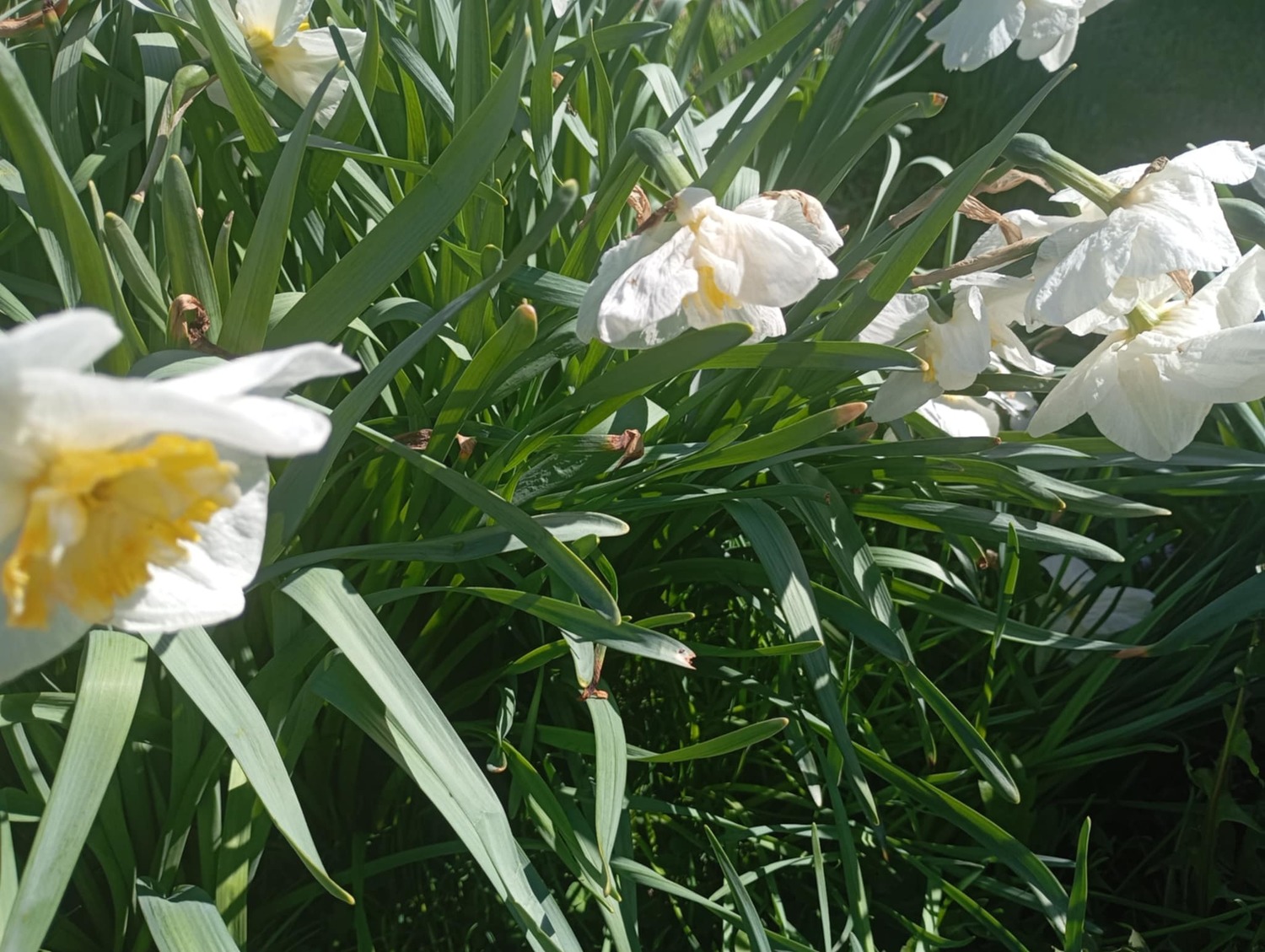
To protect daffodils from diseases and pests, it is important to follow certain preventive measures. First, only healthy bulbs without visible damage or signs of rot should be chosen for planting. The soil must be well-drained to prevent overwatering, which can promote the spread of diseases. Additionally, it is important to rotate planting locations annually to reduce the likelihood of pests and diseases remaining in the soil.

